Story and Photos by ITN European Reporter Herve’ Rebollo
Salut à toi American rider,
Let’s cross the Belgian border with me and ride to the ATOMIUM.
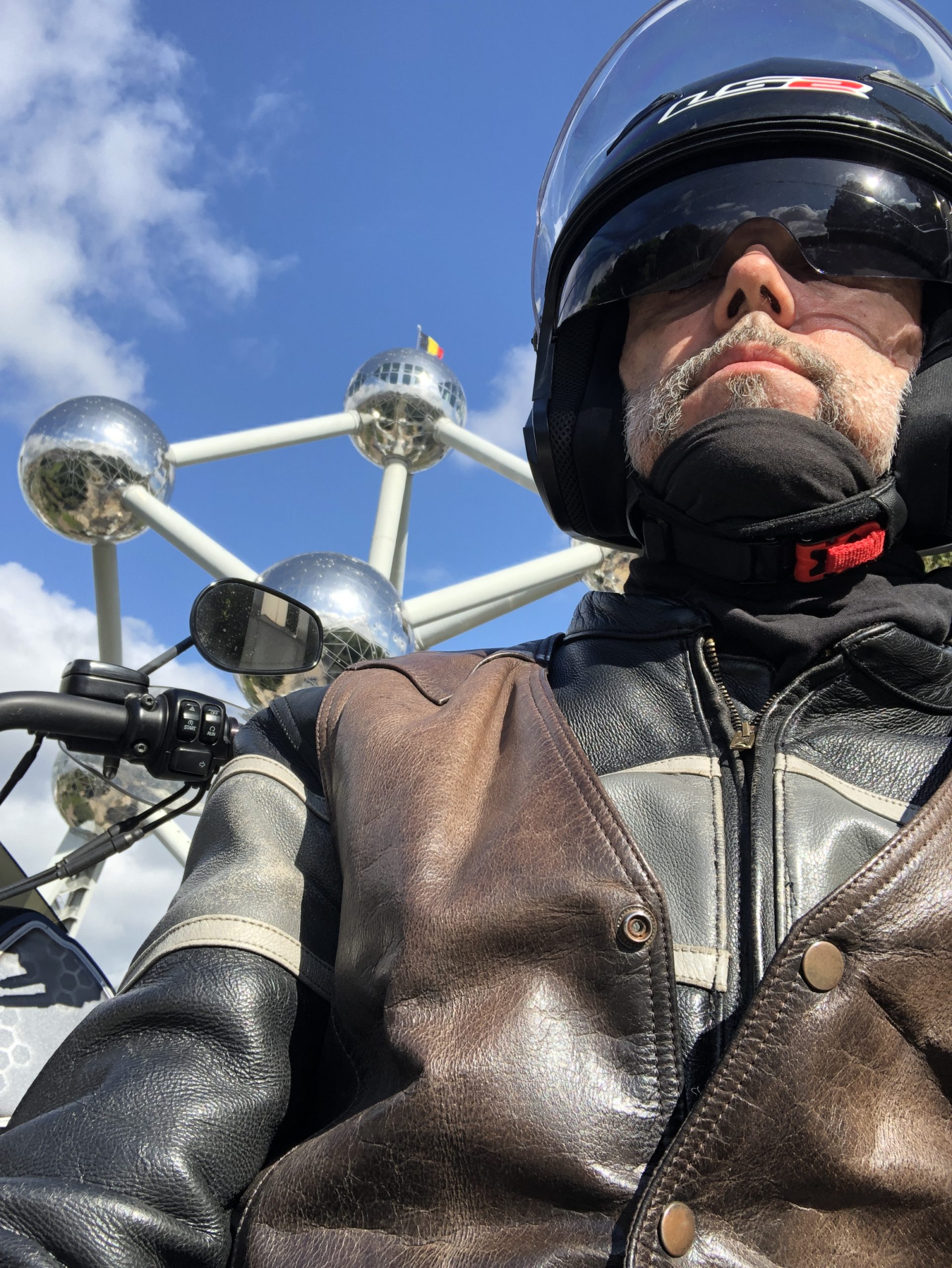 For years I wanted to see this famous Belgian monument. Lucky me, in this late August, my business took me for two days in the north of France, less than 100 miles from Brussels. So, I decided to take my bike to go to my meeting in Lille city, and then to cross the border to meet this legendary “atomic beast” monument.
For years I wanted to see this famous Belgian monument. Lucky me, in this late August, my business took me for two days in the north of France, less than 100 miles from Brussels. So, I decided to take my bike to go to my meeting in Lille city, and then to cross the border to meet this legendary “atomic beast” monument.
 The ATOMIUM is a landmark building in BRUSSELS (BELGIUM), originally constructed for the 1958 Brussels World’s Fair (EXPO 58). It is located on the Heysel Plateau, where the exhibition took place. It is now a museum.
The ATOMIUM is a landmark building in BRUSSELS (BELGIUM), originally constructed for the 1958 Brussels World’s Fair (EXPO 58). It is located on the Heysel Plateau, where the exhibition took place. It is now a museum.
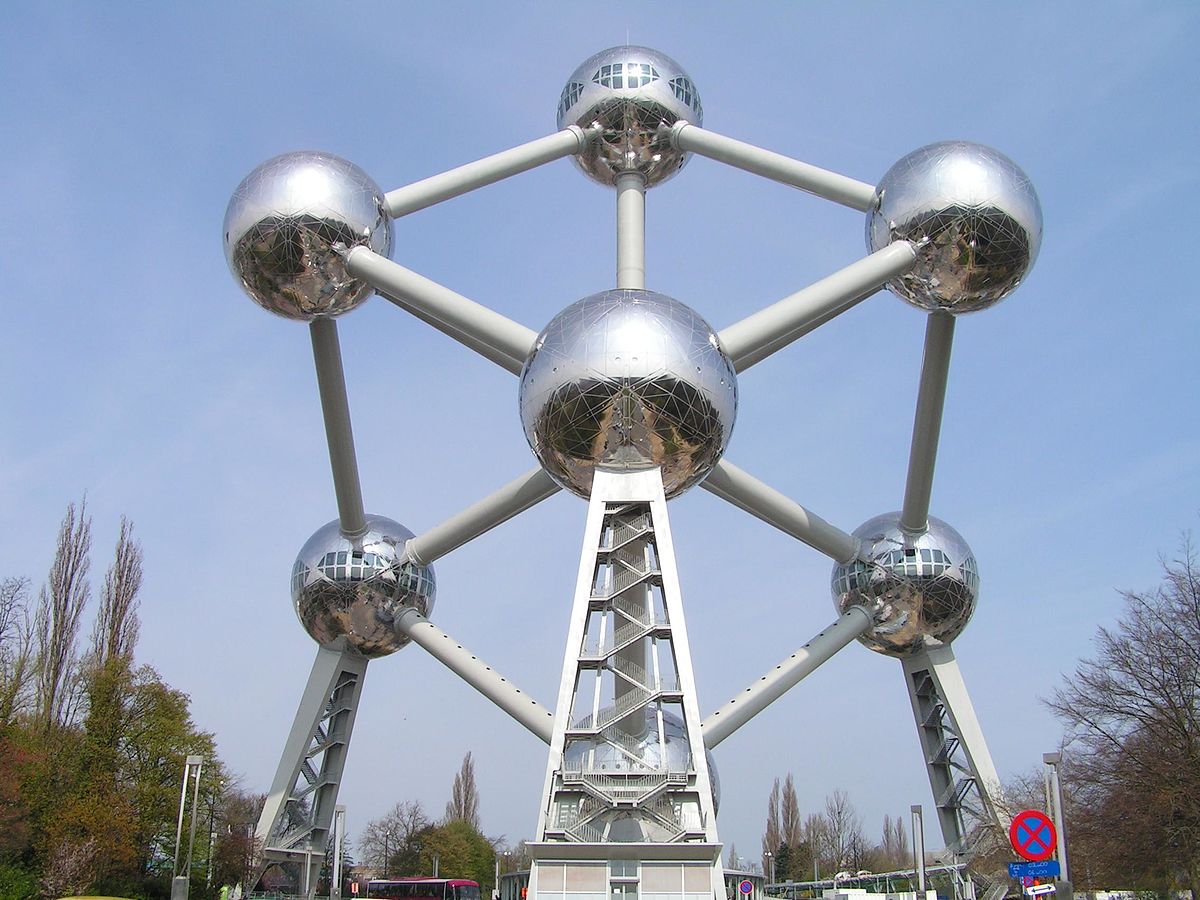 So, in this sunny Saturday, leaving Lille city (180 miles from Paris, North of France), going East, it was time to enter in Belgium (where 99,99% of the buildings and houses are made of bricks – and its generally nice and made with a very good taste – Belgium is a beautiful country where people are really kind and cool).
So, in this sunny Saturday, leaving Lille city (180 miles from Paris, North of France), going East, it was time to enter in Belgium (where 99,99% of the buildings and houses are made of bricks – and its generally nice and made with a very good taste – Belgium is a beautiful country where people are really kind and cool).
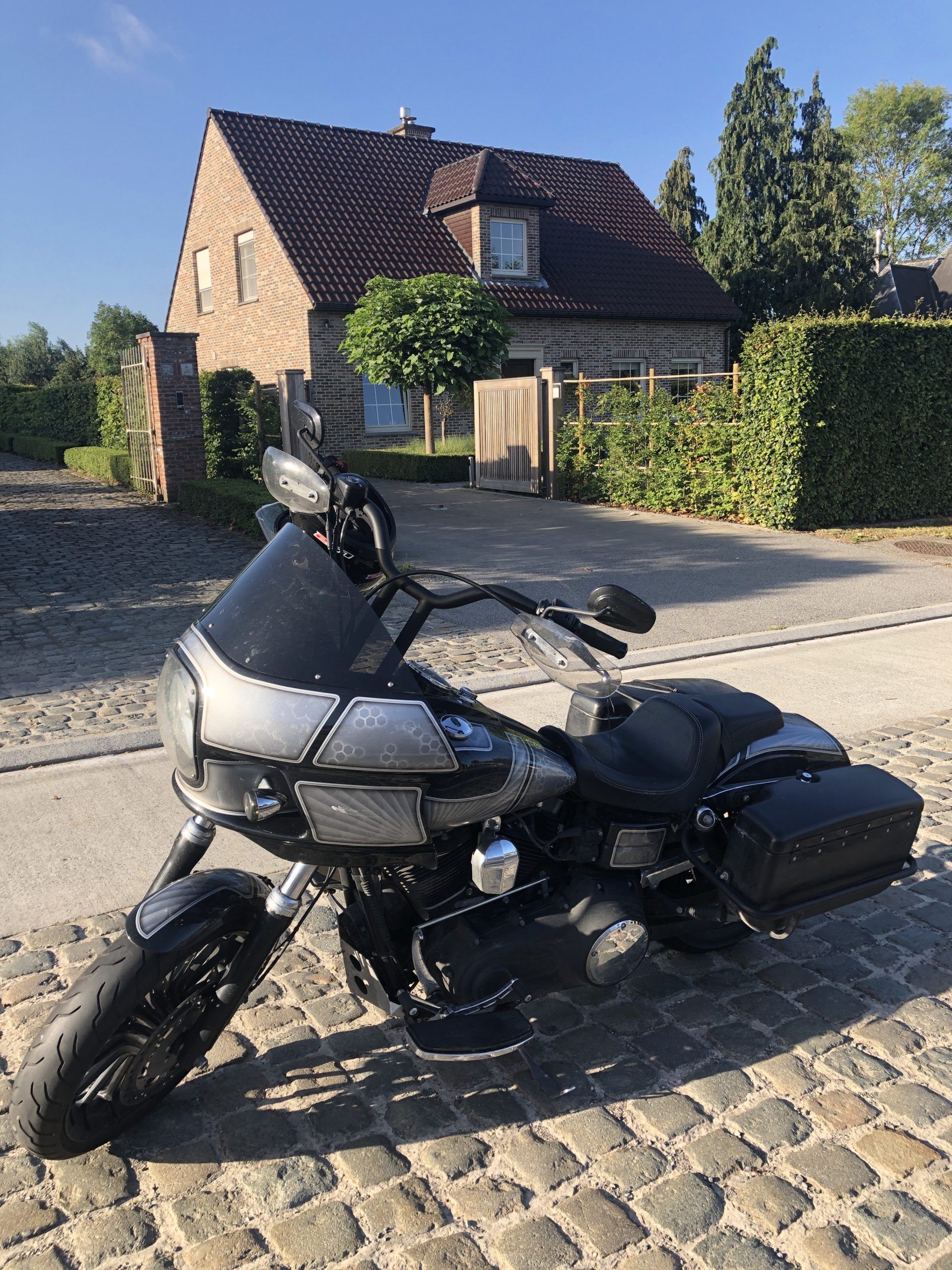 Of course, I respected my personal tradition to make a stop at the local Harley Davidson dealer, the proud CAPITAL BRUSSELS dealership (located at the West of Brussel on National road 8).
Of course, I respected my personal tradition to make a stop at the local Harley Davidson dealer, the proud CAPITAL BRUSSELS dealership (located at the West of Brussel on National road 8).
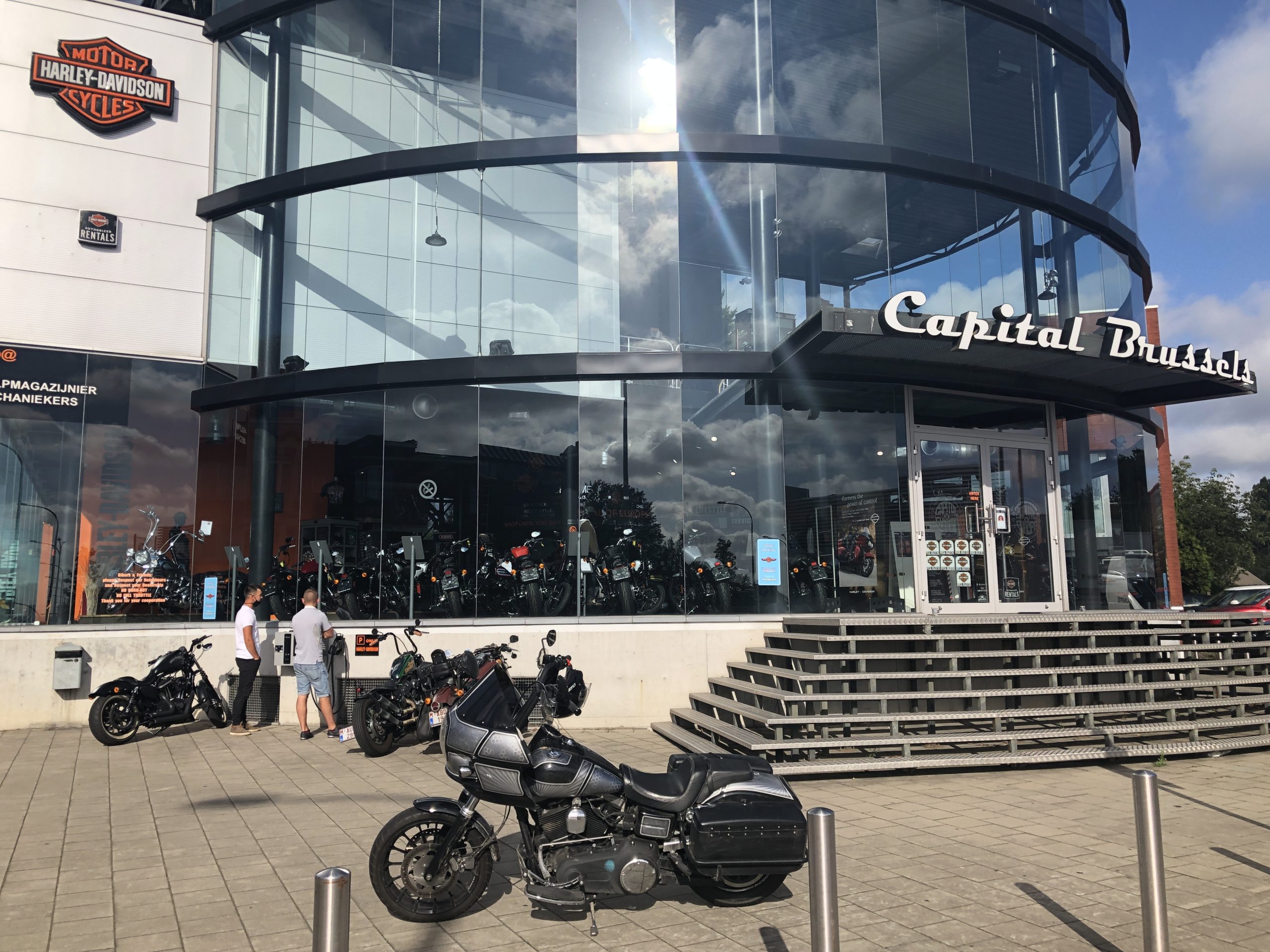 It was time to make the show with my all brand new homemade Covid mask!!! Yes sir!!! A family product made by …my mom. Love you momie, you’re so rock n’ roll!!! Thank to you, I have so much success with my killer mask. I’m a real man now with it. Xxxxxxxxx
It was time to make the show with my all brand new homemade Covid mask!!! Yes sir!!! A family product made by …my mom. Love you momie, you’re so rock n’ roll!!! Thank to you, I have so much success with my killer mask. I’m a real man now with it. Xxxxxxxxx
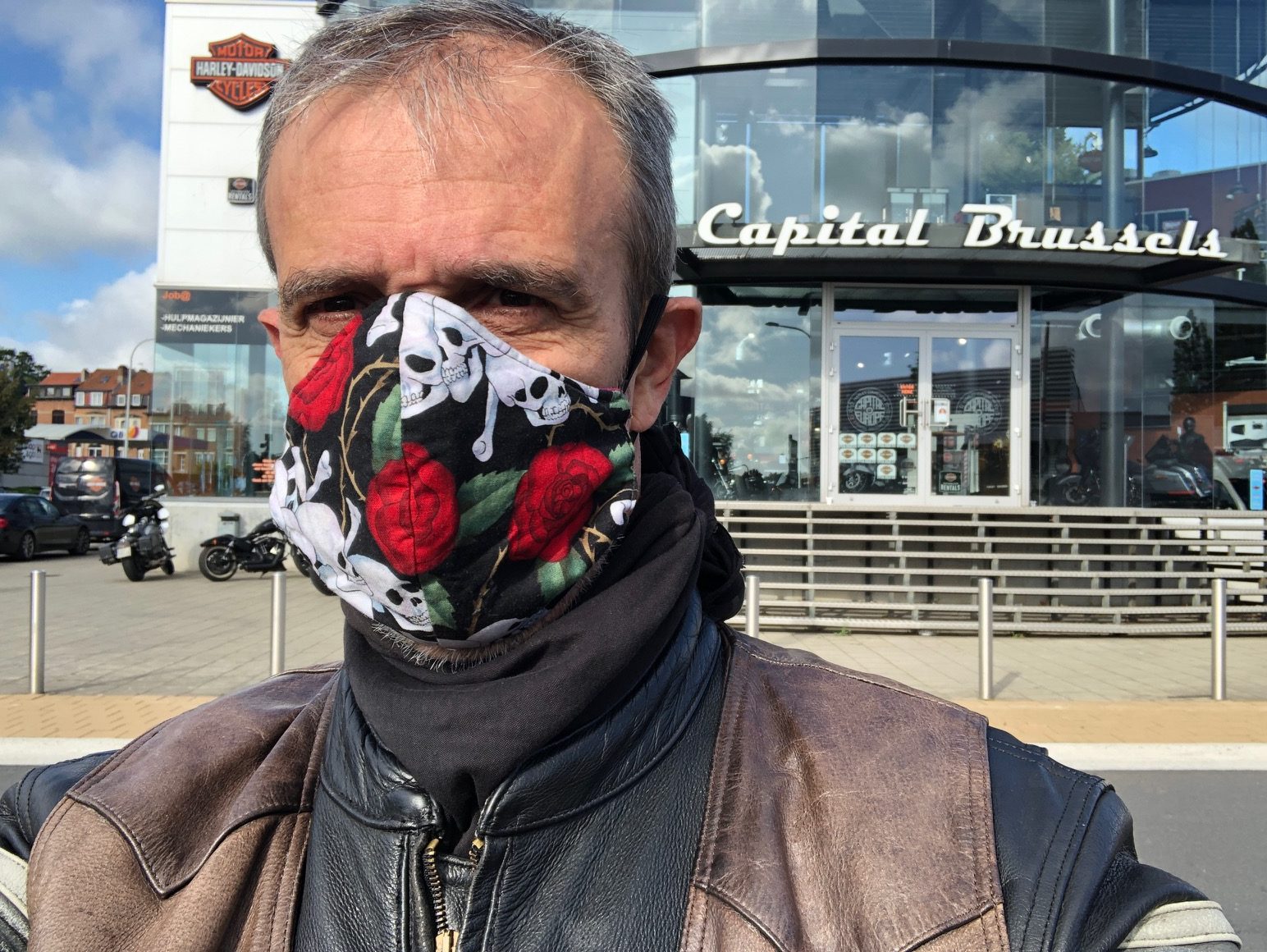 The place is famous and proudly claims being located in the capital of Europe.
The place is famous and proudly claims being located in the capital of Europe.
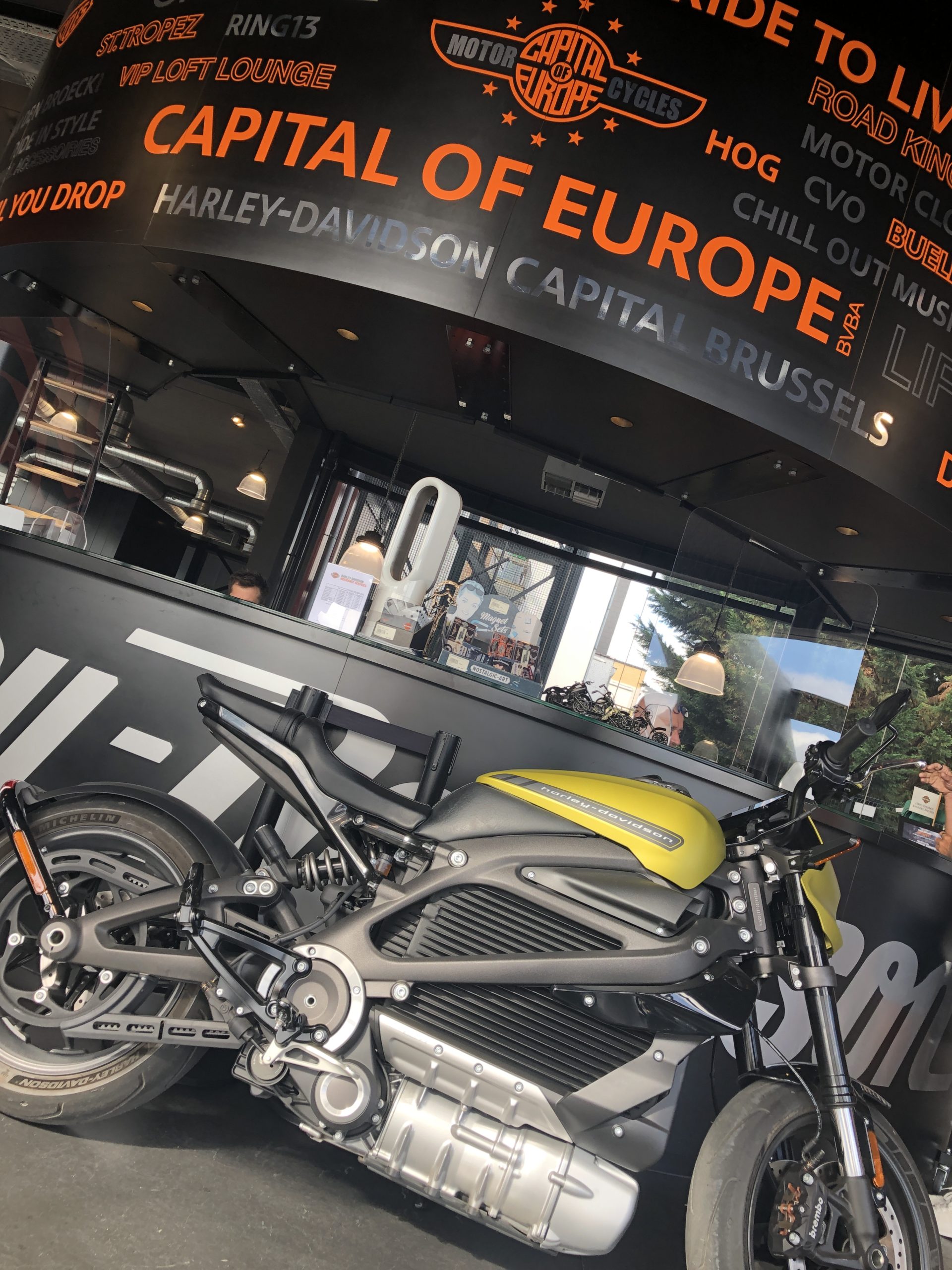 And then, lets meet the ATOMIUM!!
And then, lets meet the ATOMIUM!!
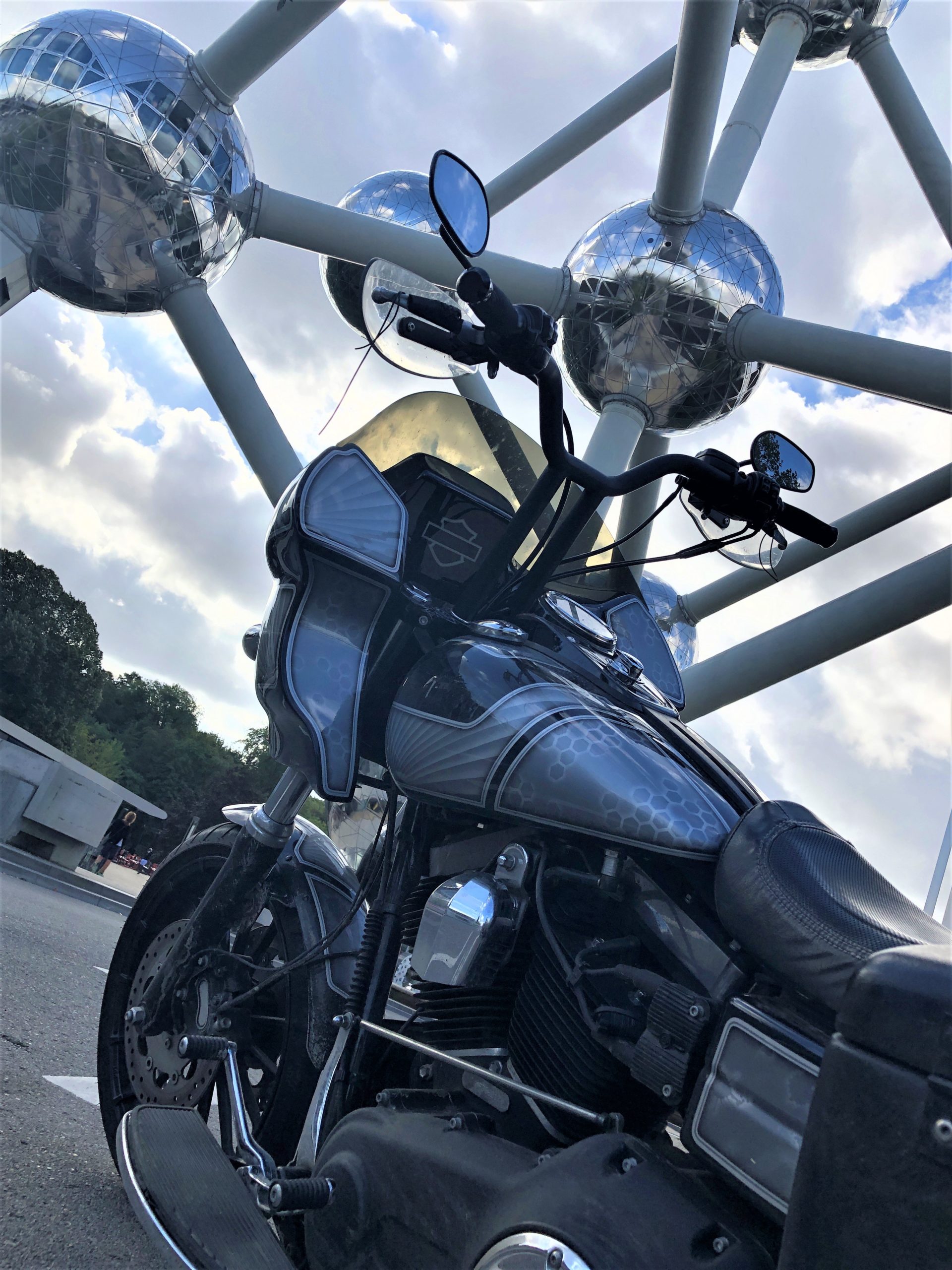 The Atomium was built as the main pavilion and icon of the 1958 World Expo of Brussels. In the 1950s, faith in scientific progress was great, and a structure depicting atoms was chosen to embody this. The Atomium depicts nine iron atoms in the shape of the body-centred cubic unit cell of an iron crystal, magnified 165 billion times.
The Atomium was built as the main pavilion and icon of the 1958 World Expo of Brussels. In the 1950s, faith in scientific progress was great, and a structure depicting atoms was chosen to embody this. The Atomium depicts nine iron atoms in the shape of the body-centred cubic unit cell of an iron crystal, magnified 165 billion times.
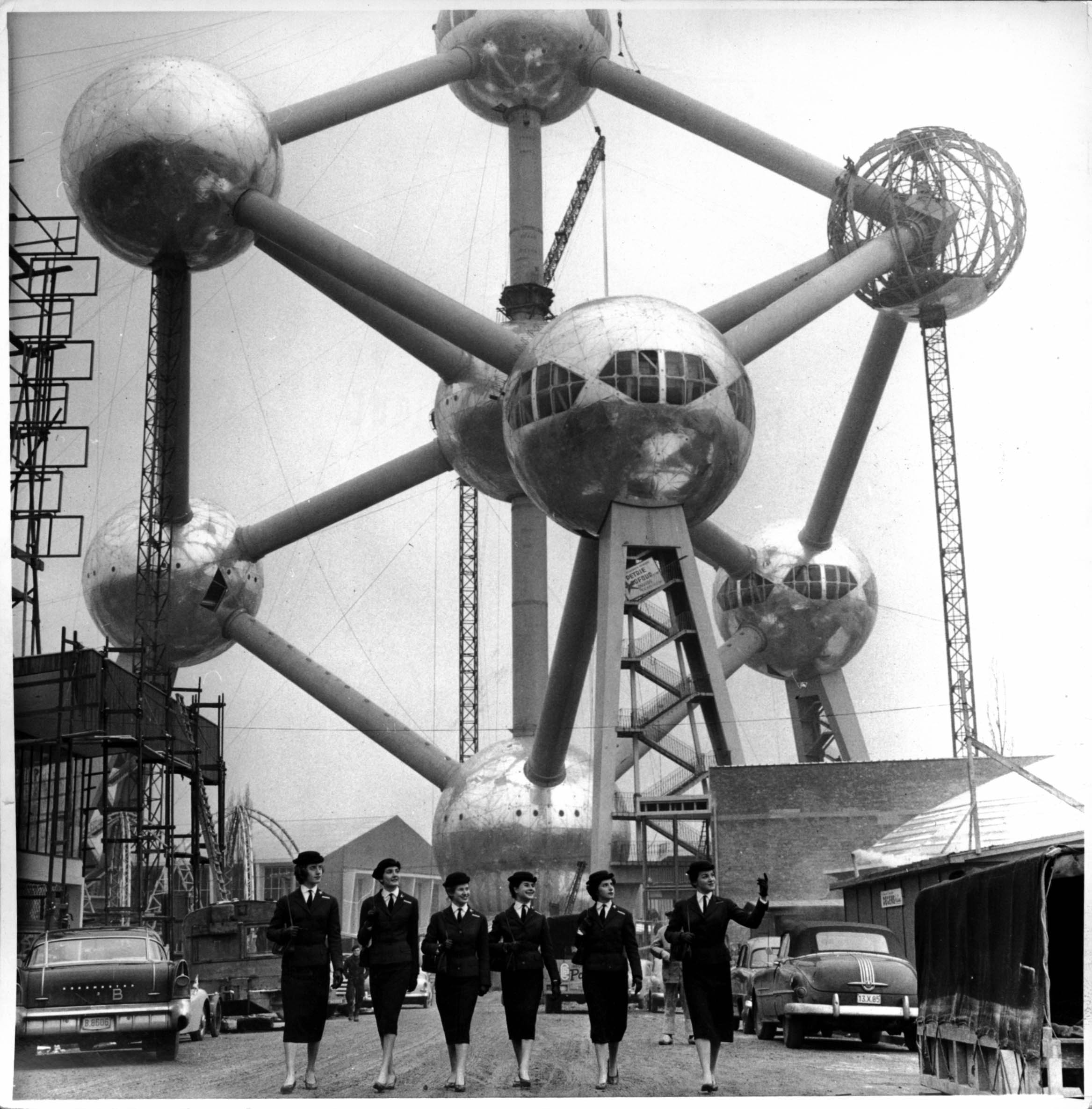 The construction of the Atomium was a technical feat. Of the nine spheres, six are accessible to the public, each with two main floors and a lower floor reserved for service. The central tube contains the fastest elevator of the time at 5 m/s (20 ft/s), installed by the Belgian branch of the Swiss firm Schlieren (subsequently taken over by Schindler). It allows 22 people to reach the summit in 23 seconds. The escalators installed in the oblique tubes are among the longest in Europe. The biggest is 35 m (100 ft) long.
The construction of the Atomium was a technical feat. Of the nine spheres, six are accessible to the public, each with two main floors and a lower floor reserved for service. The central tube contains the fastest elevator of the time at 5 m/s (20 ft/s), installed by the Belgian branch of the Swiss firm Schlieren (subsequently taken over by Schindler). It allows 22 people to reach the summit in 23 seconds. The escalators installed in the oblique tubes are among the longest in Europe. The biggest is 35 m (100 ft) long.
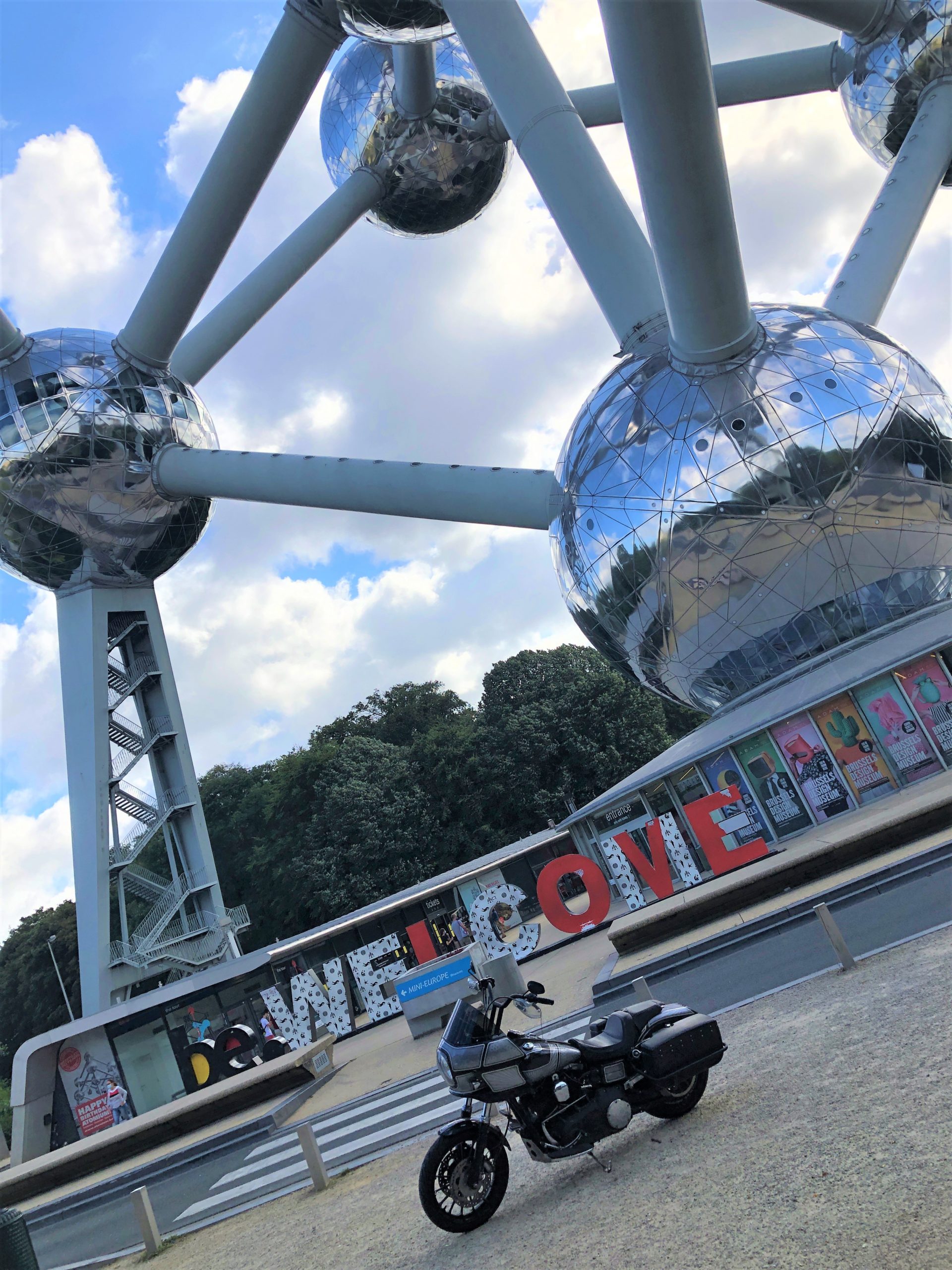 Three of the four top spheres lack vertical support and hence are not open to the public for safety reasons, although the sphere at the pinnacle is open to the public. The original design called for no supports; the structure was simply to rest on the spheres. Wind tunnel tests proved that the structure would have toppled in an 80 km/h (50 mph) wind (140 km/h (90 mph) winds have been recorded in Belgium). Support columns were added to achieve enough resistance against overturning. The Atomium, designed to last six months, was not destined to survive the 1958 World Expo, but its popularity and success made it a major element of the Brussels landscape. Its destruction was therefore postponed year after year, until the city’s authorities decided to keep it. However, for thirty years, little maintenance work was done.
Three of the four top spheres lack vertical support and hence are not open to the public for safety reasons, although the sphere at the pinnacle is open to the public. The original design called for no supports; the structure was simply to rest on the spheres. Wind tunnel tests proved that the structure would have toppled in an 80 km/h (50 mph) wind (140 km/h (90 mph) winds have been recorded in Belgium). Support columns were added to achieve enough resistance against overturning. The Atomium, designed to last six months, was not destined to survive the 1958 World Expo, but its popularity and success made it a major element of the Brussels landscape. Its destruction was therefore postponed year after year, until the city’s authorities decided to keep it. However, for thirty years, little maintenance work was done.
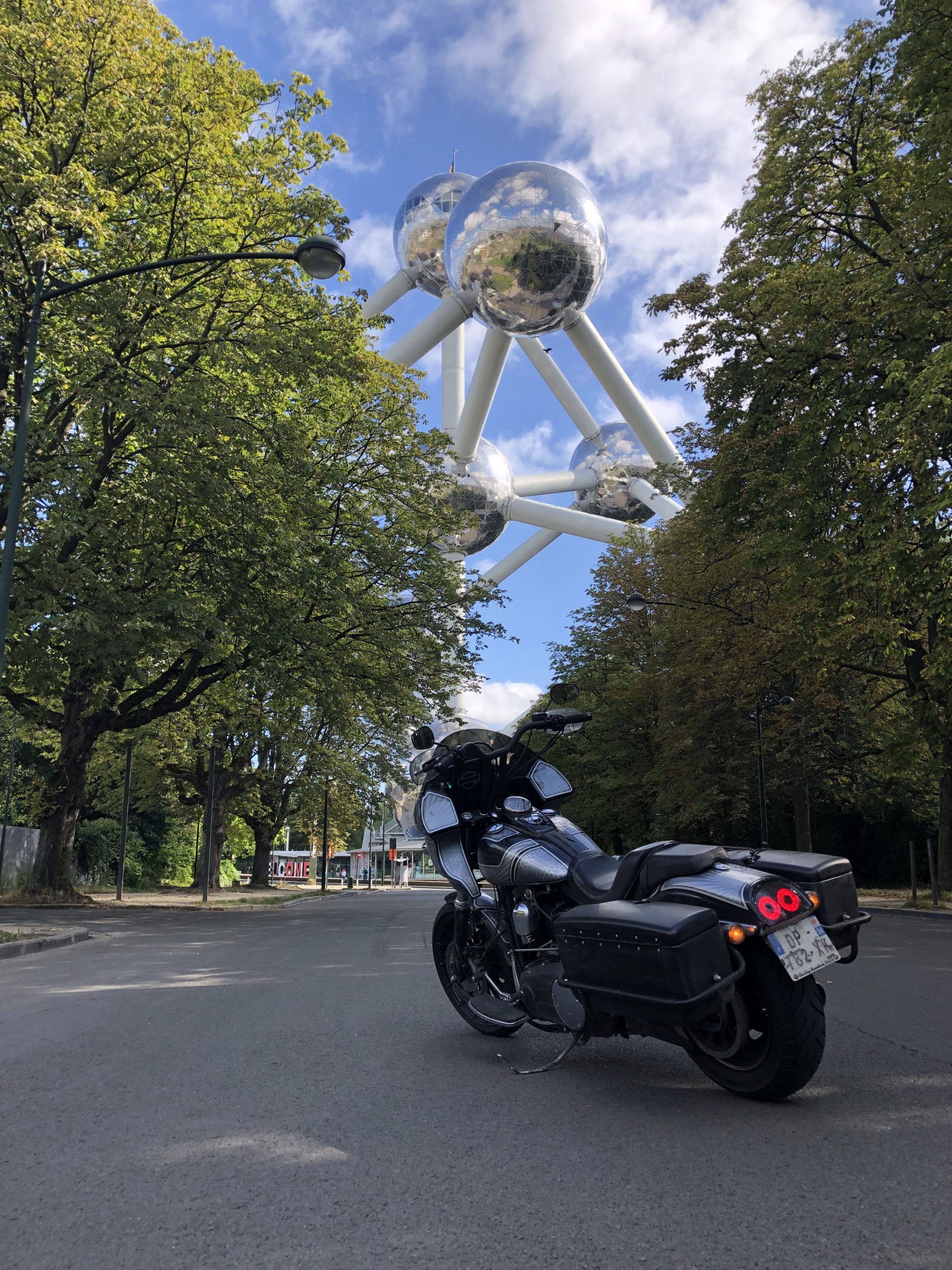 By the turn of the millenium, the state of the building had deteriorated and a comprehensive renovation was sorely needed. Renovation of the Atomium began in March 2004; it was closed to the public in October, and remained closed until 18 February 2006. The renovation included replacing the faded aluminium sheets on the spheres with stainless steel.
By the turn of the millenium, the state of the building had deteriorated and a comprehensive renovation was sorely needed. Renovation of the Atomium began in March 2004; it was closed to the public in October, and remained closed until 18 February 2006. The renovation included replacing the faded aluminium sheets on the spheres with stainless steel.
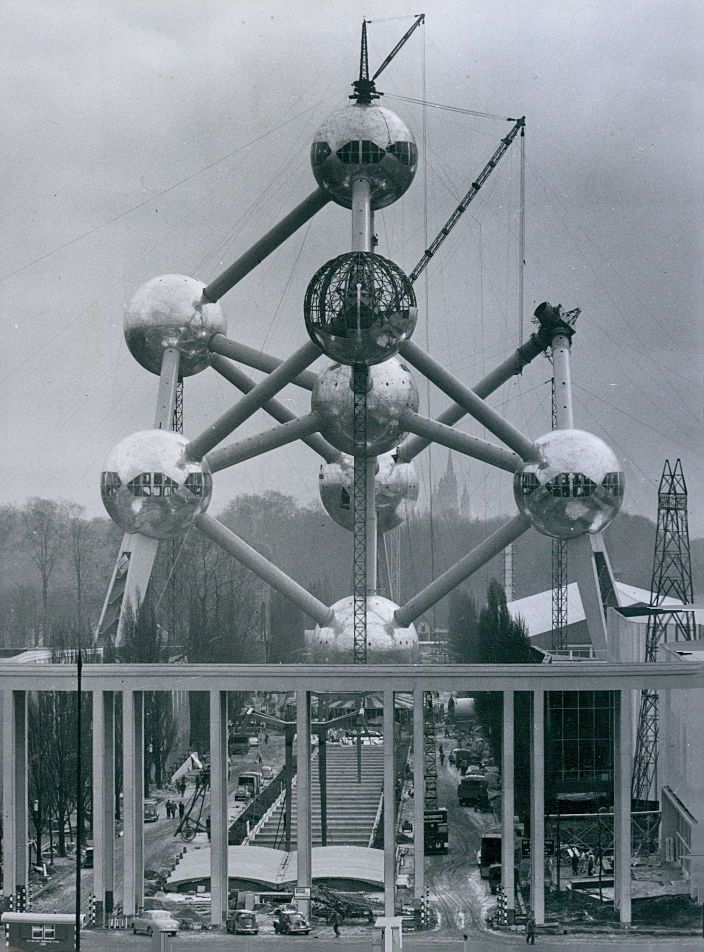 On 21 December 2005, the new Atomium outdoor lighting was tested. The meridians of each sphere were covered with rectangular steel plates, in which LED lighting was integrated. The LED application illuminates the bulbs at night. The lights can also flash simultaneously or in turns at each meridian, symbolising the range of an electron around its core. In addition, the German industrial designer Ingo Maure created lighting objects and installations for the interior of the building. On 14 February 2006, the Atomium was officially reopened, and on 18 February 2006, it opened again to the public. The renovation cost €26 million. Brussels and the Atomium Association paid one-third of the costs, the Belgian government financed two thirds. To help pay for the renovation, pieces of the old aluminium plates were sold to the public as souvenirs. One triangular piece about 2 m (7 ft) long sold for €1,000.
On 21 December 2005, the new Atomium outdoor lighting was tested. The meridians of each sphere were covered with rectangular steel plates, in which LED lighting was integrated. The LED application illuminates the bulbs at night. The lights can also flash simultaneously or in turns at each meridian, symbolising the range of an electron around its core. In addition, the German industrial designer Ingo Maure created lighting objects and installations for the interior of the building. On 14 February 2006, the Atomium was officially reopened, and on 18 February 2006, it opened again to the public. The renovation cost €26 million. Brussels and the Atomium Association paid one-third of the costs, the Belgian government financed two thirds. To help pay for the renovation, pieces of the old aluminium plates were sold to the public as souvenirs. One triangular piece about 2 m (7 ft) long sold for €1,000.
 Though the Atomium depicts an iron unit cell, the balls were originally clad with aluminium. Following the 2004–2006 renovation, however, the aluminium was replaced with stainless steel , which is primarily iron. Likewise, while the subject of Atomium was chosen to depict the enthusiasm of the Atomic Age, iron is not and cannot be used as fuel in nuclear reactions.
Though the Atomium depicts an iron unit cell, the balls were originally clad with aluminium. Following the 2004–2006 renovation, however, the aluminium was replaced with stainless steel , which is primarily iron. Likewise, while the subject of Atomium was chosen to depict the enthusiasm of the Atomic Age, iron is not and cannot be used as fuel in nuclear reactions.
 This ride was real great. The weather was simply perfect and on my way back home, totally by chance, crossing the little village of Montcornet, I saw a tank monument I didn’t know yet. Lucky me!!!
This ride was real great. The weather was simply perfect and on my way back home, totally by chance, crossing the little village of Montcornet, I saw a tank monument I didn’t know yet. Lucky me!!!
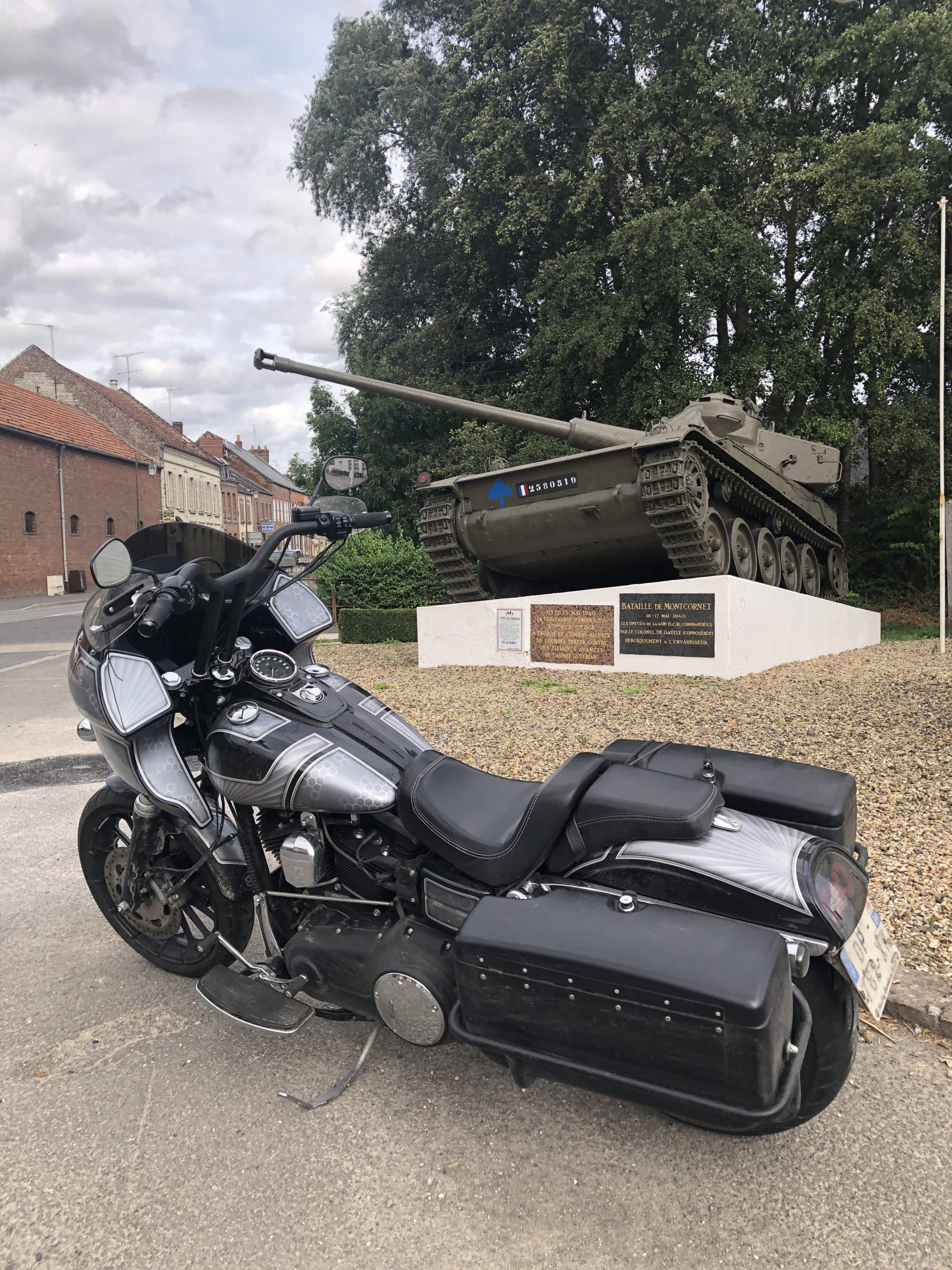 The Battle of Montcornet, on 17 May 1940 took place during the Battle of France. The French 4th Armored Division (Colonel Charles de Gaulle – not yet General), attacked the German-held village of Montcornet with over 200 tanks. The French drove off the Germans but later had to retreat due to lack of support and the intervention of the Luftwaffe.
The Battle of Montcornet, on 17 May 1940 took place during the Battle of France. The French 4th Armored Division (Colonel Charles de Gaulle – not yet General), attacked the German-held village of Montcornet with over 200 tanks. The French drove off the Germans but later had to retreat due to lack of support and the intervention of the Luftwaffe.
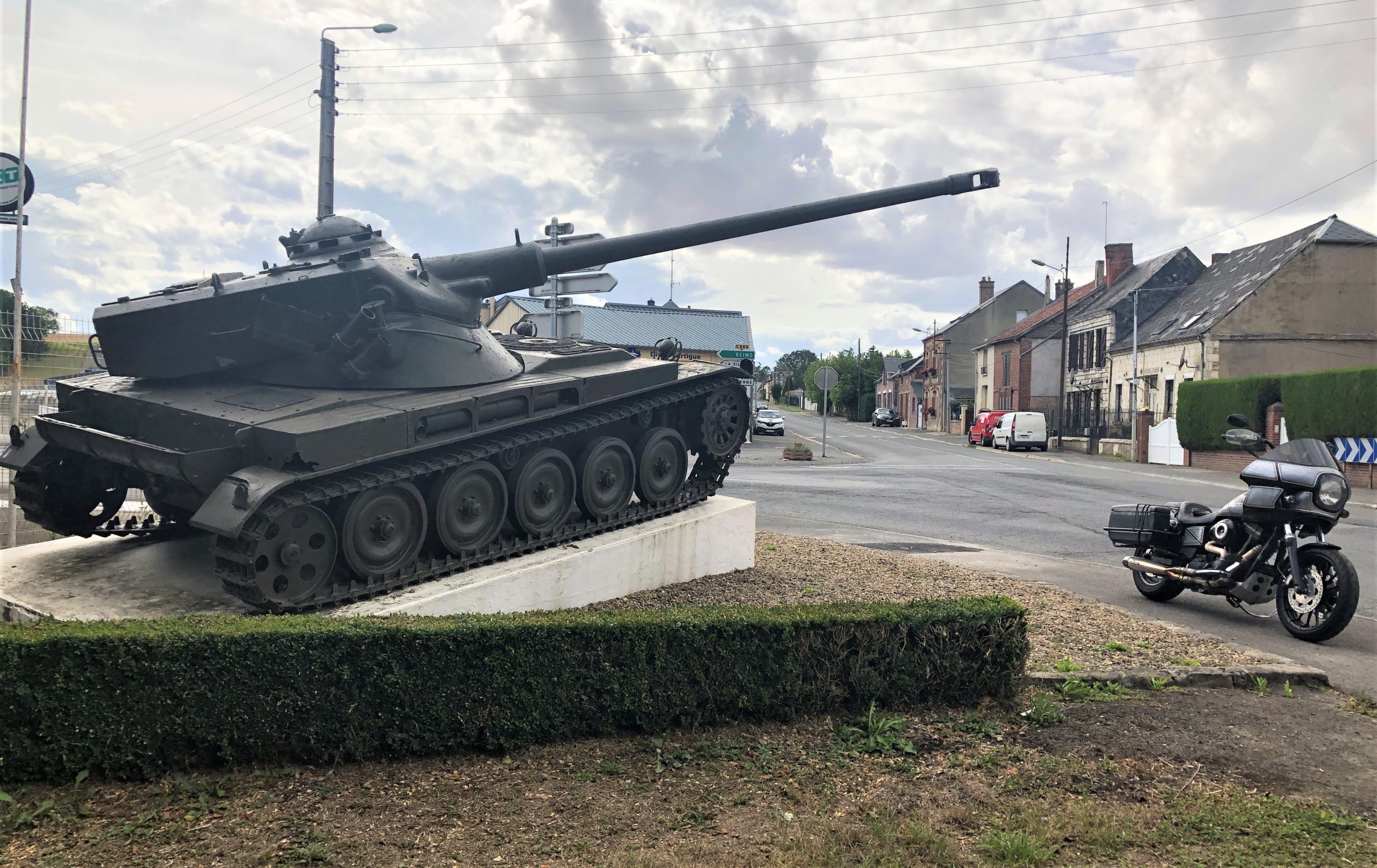 So, what could I add? 700 miles of full happiness on wheels under the sun, improving my culture and knowledge of European history … What else?!!!?
So, what could I add? 700 miles of full happiness on wheels under the sun, improving my culture and knowledge of European history … What else?!!!?
See ya soon on the road, who knows??!
Hervé, your French rider friend

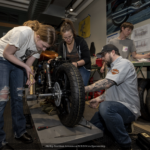
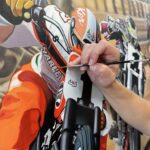
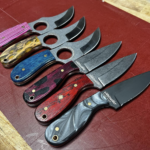

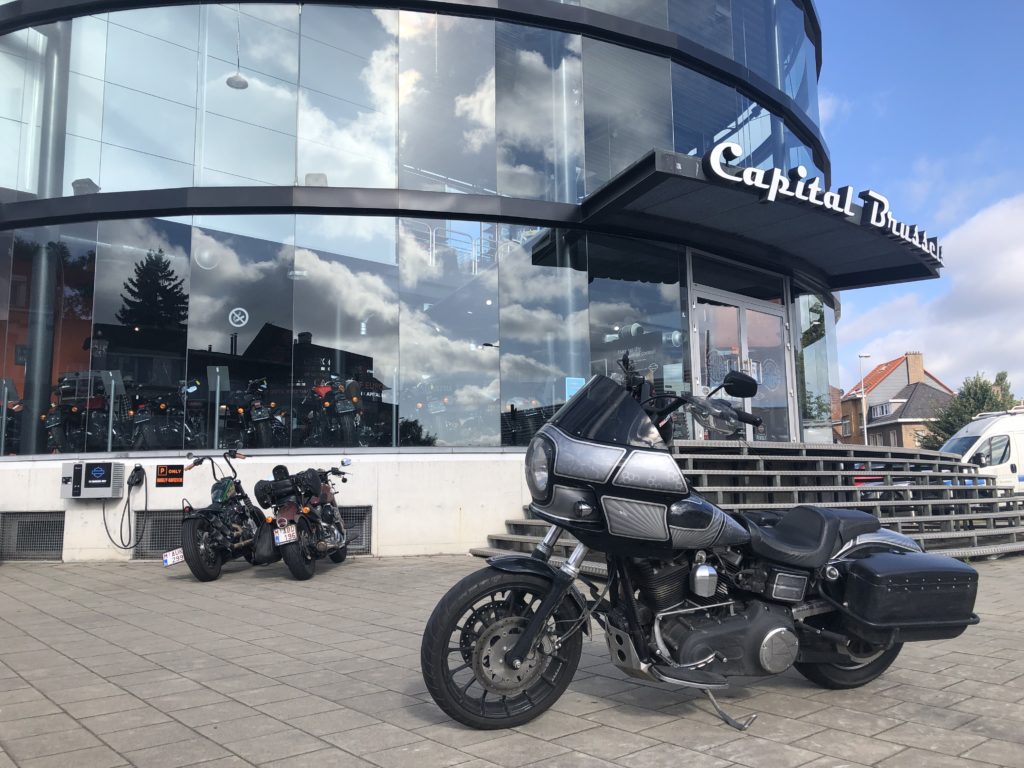
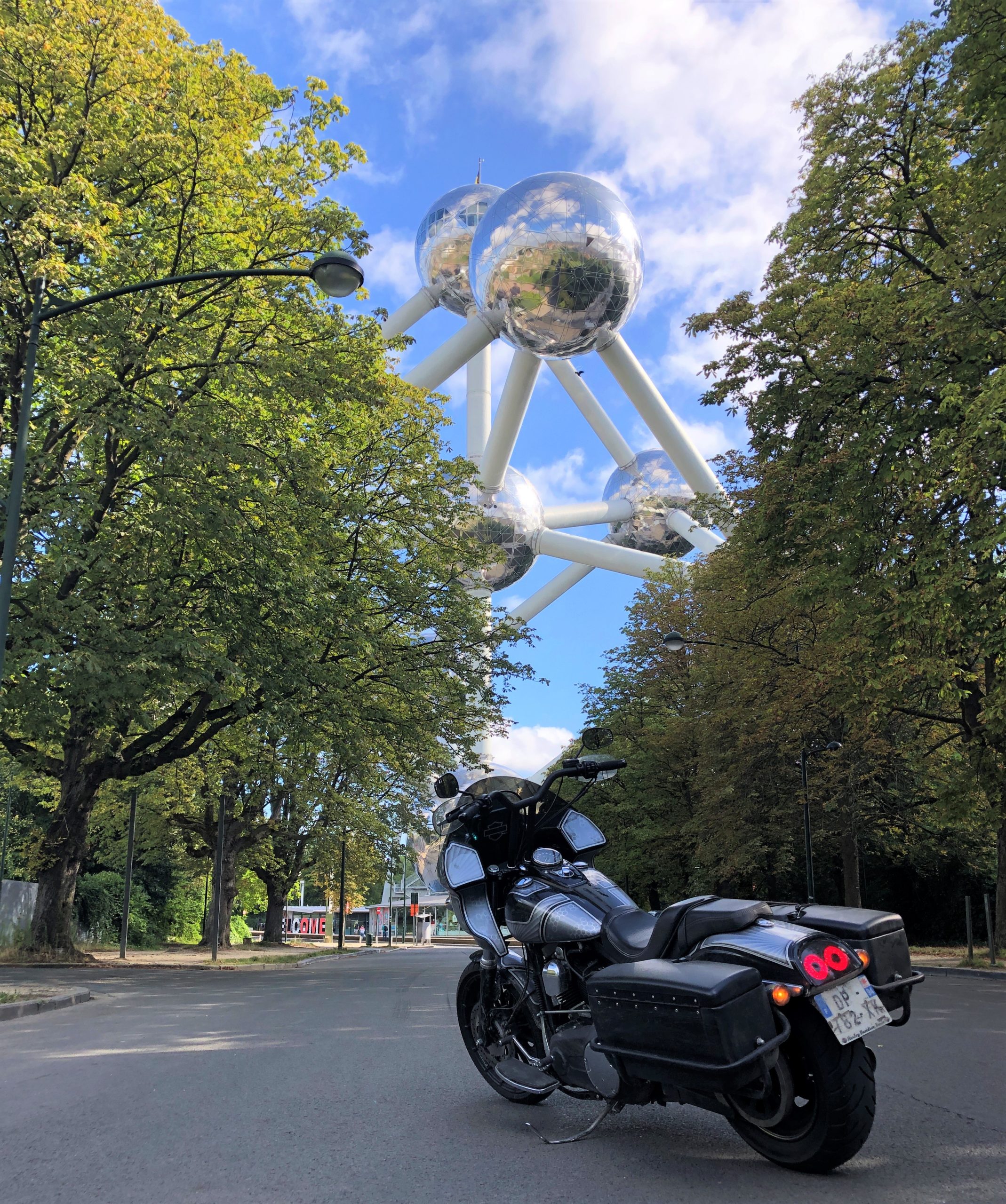
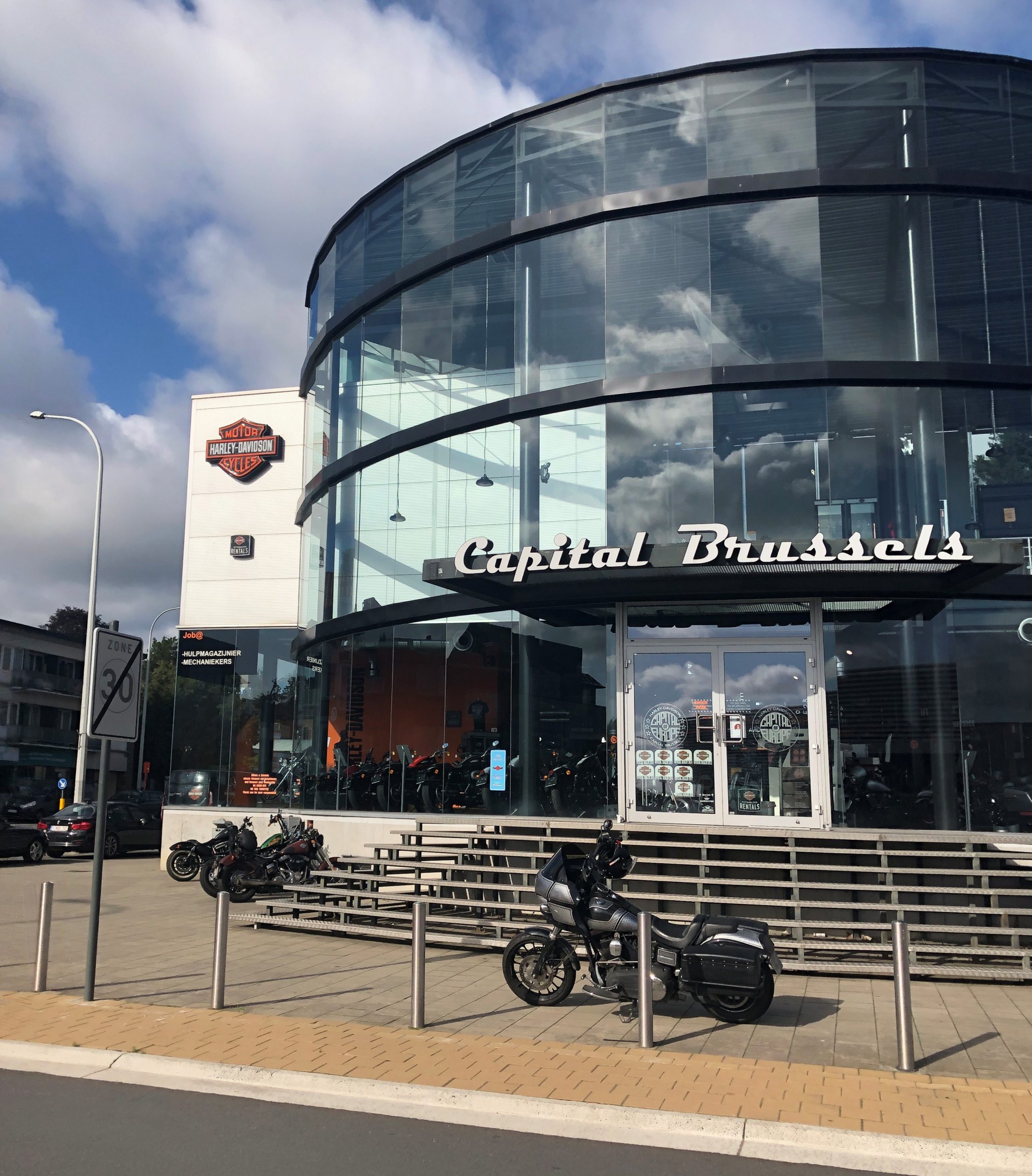
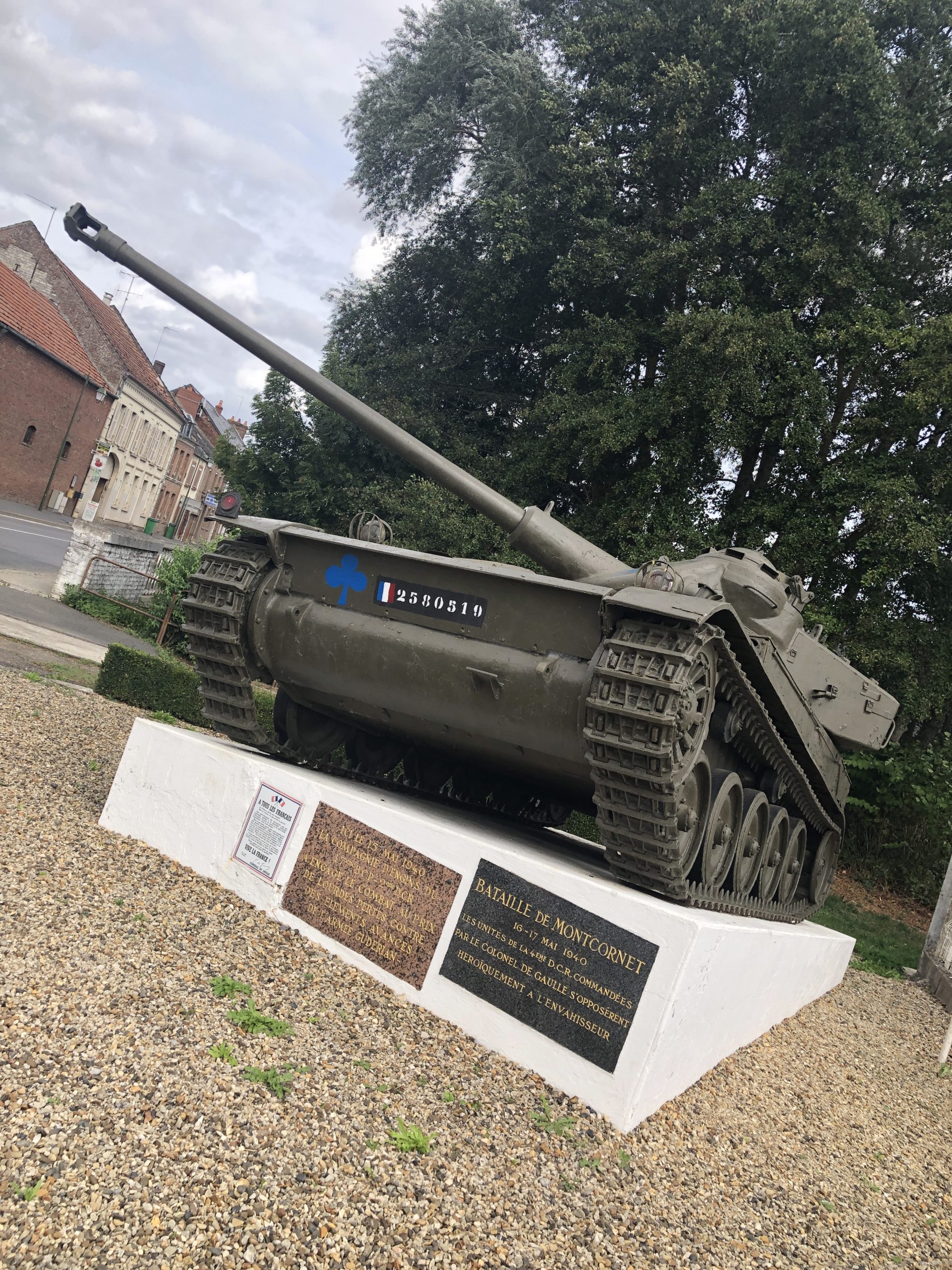

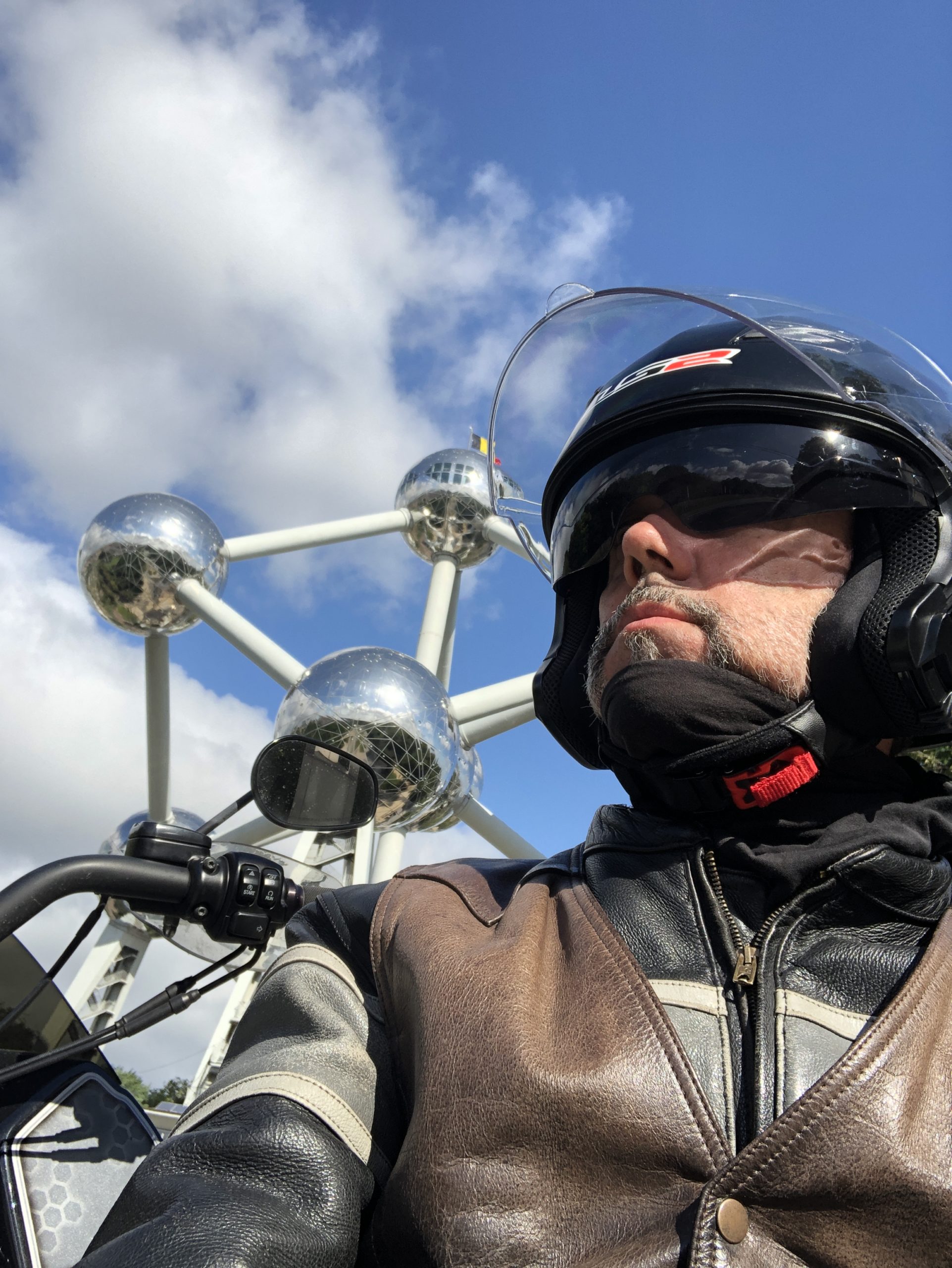

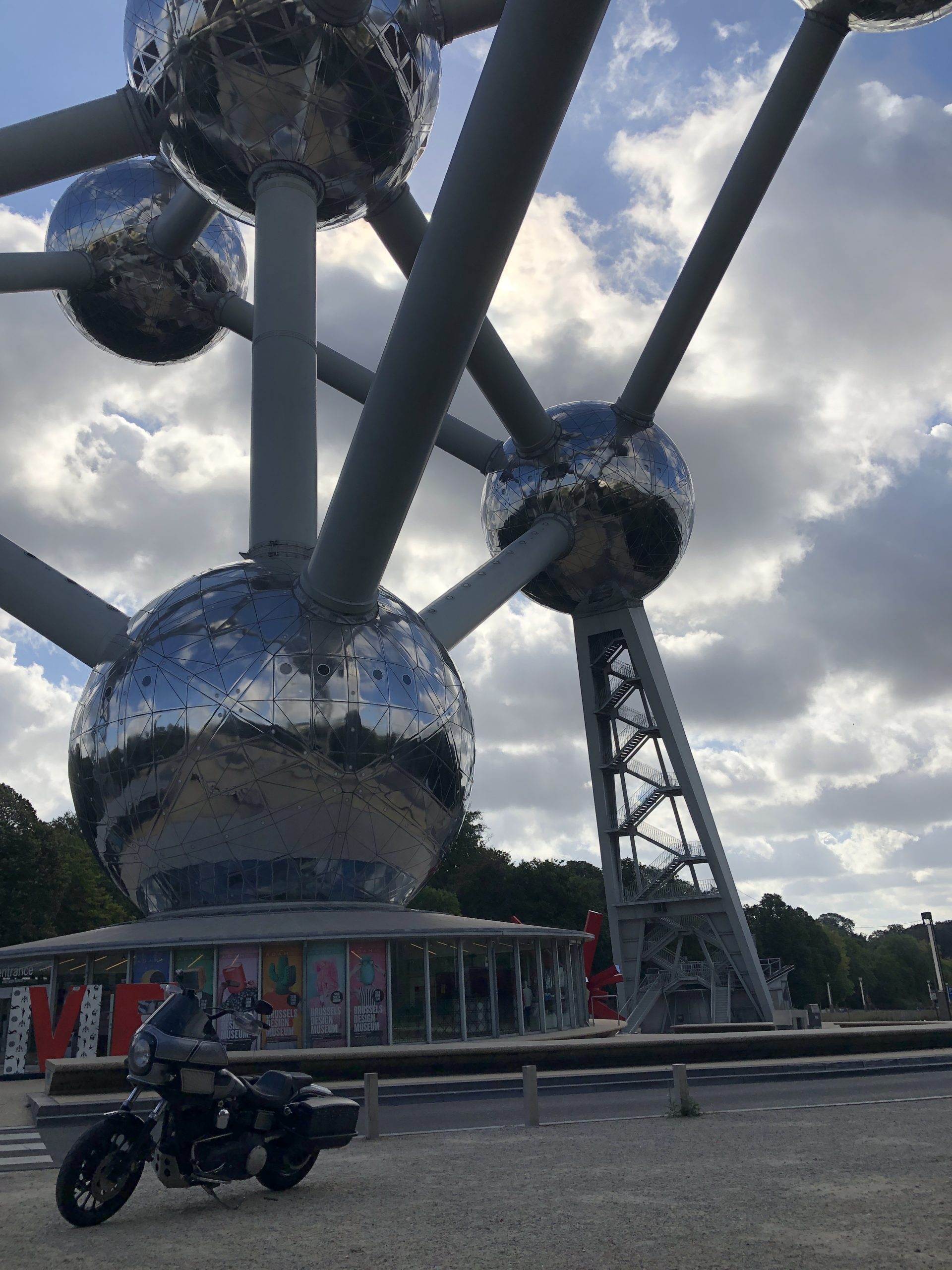
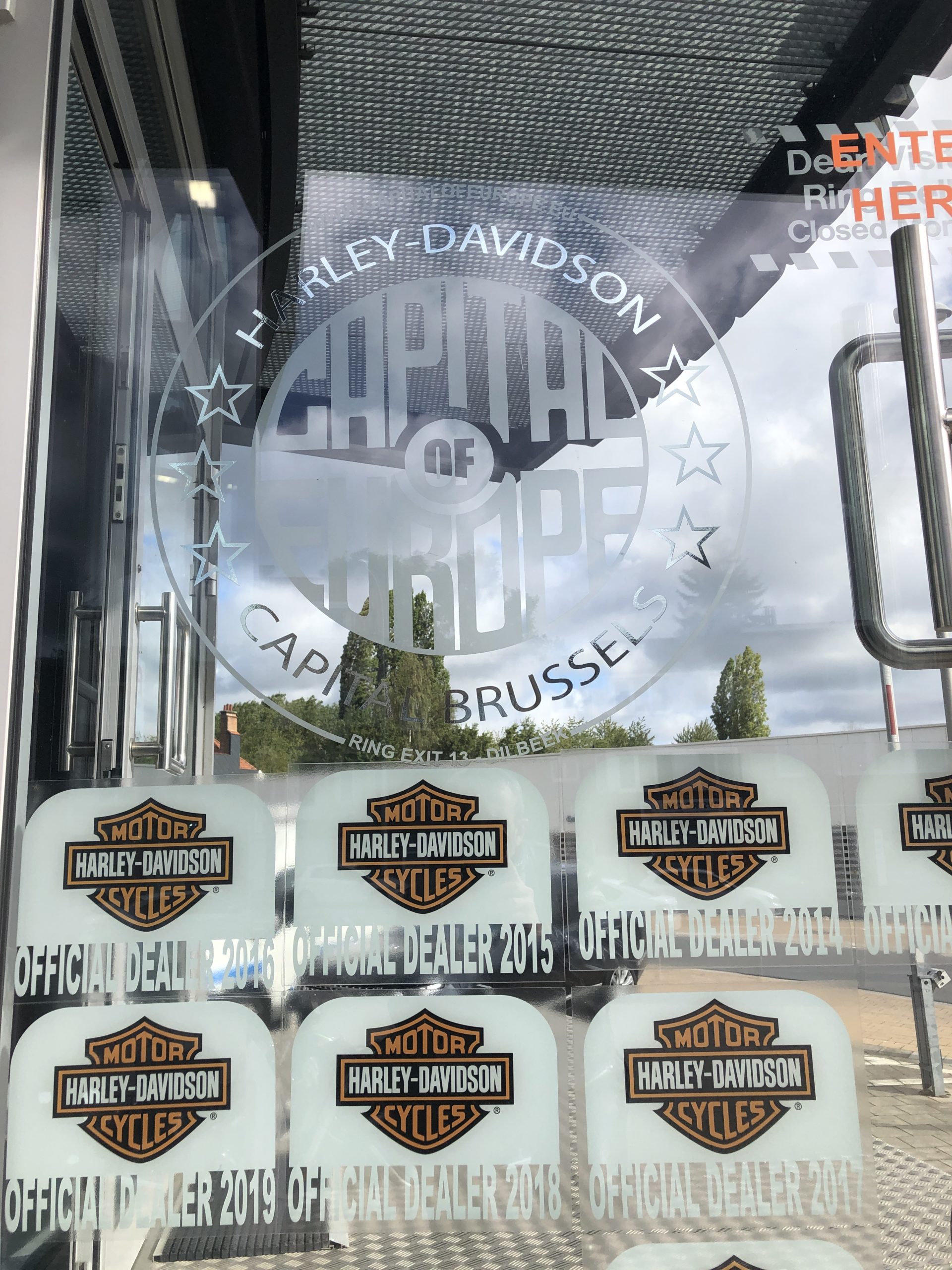

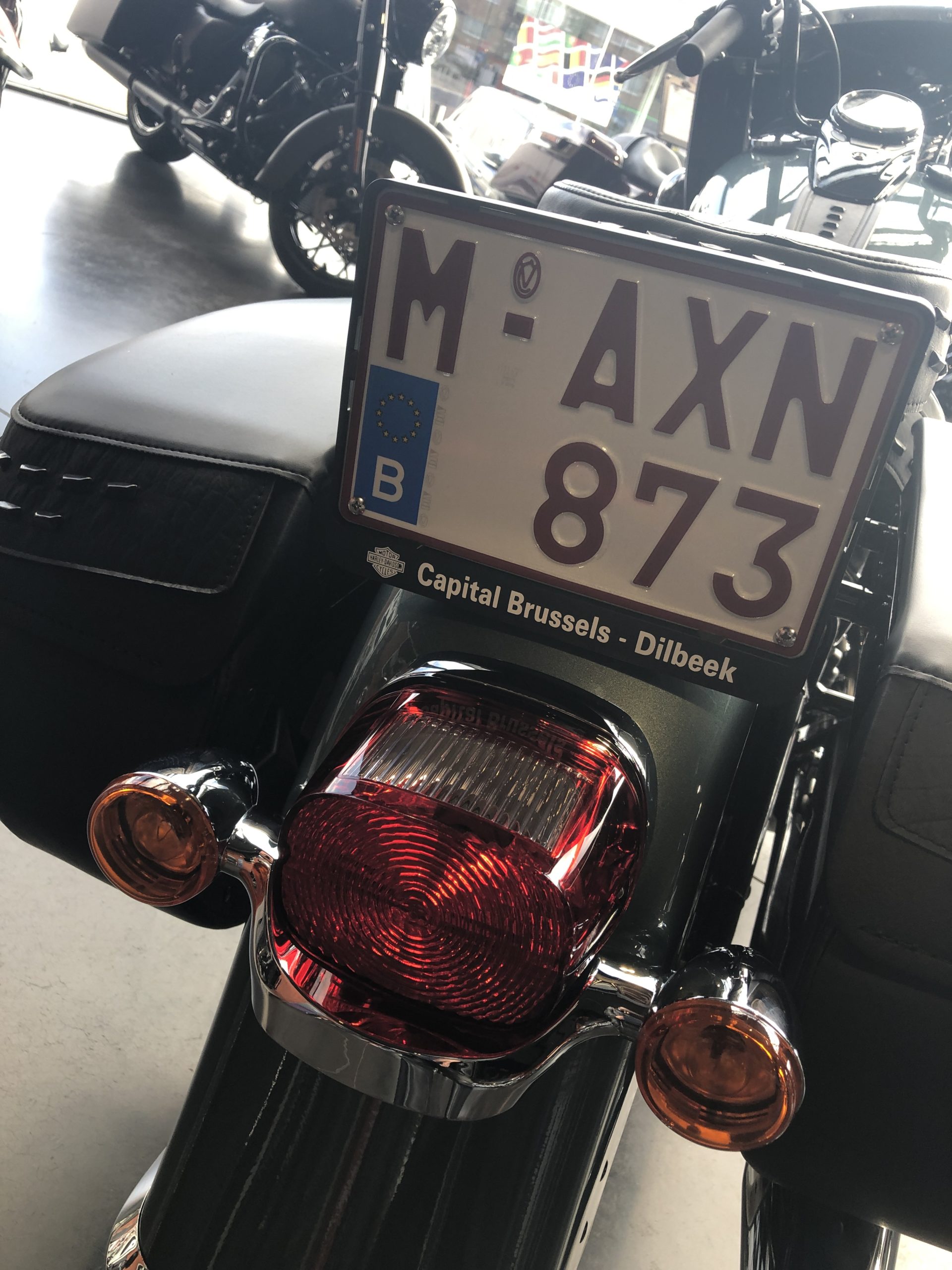

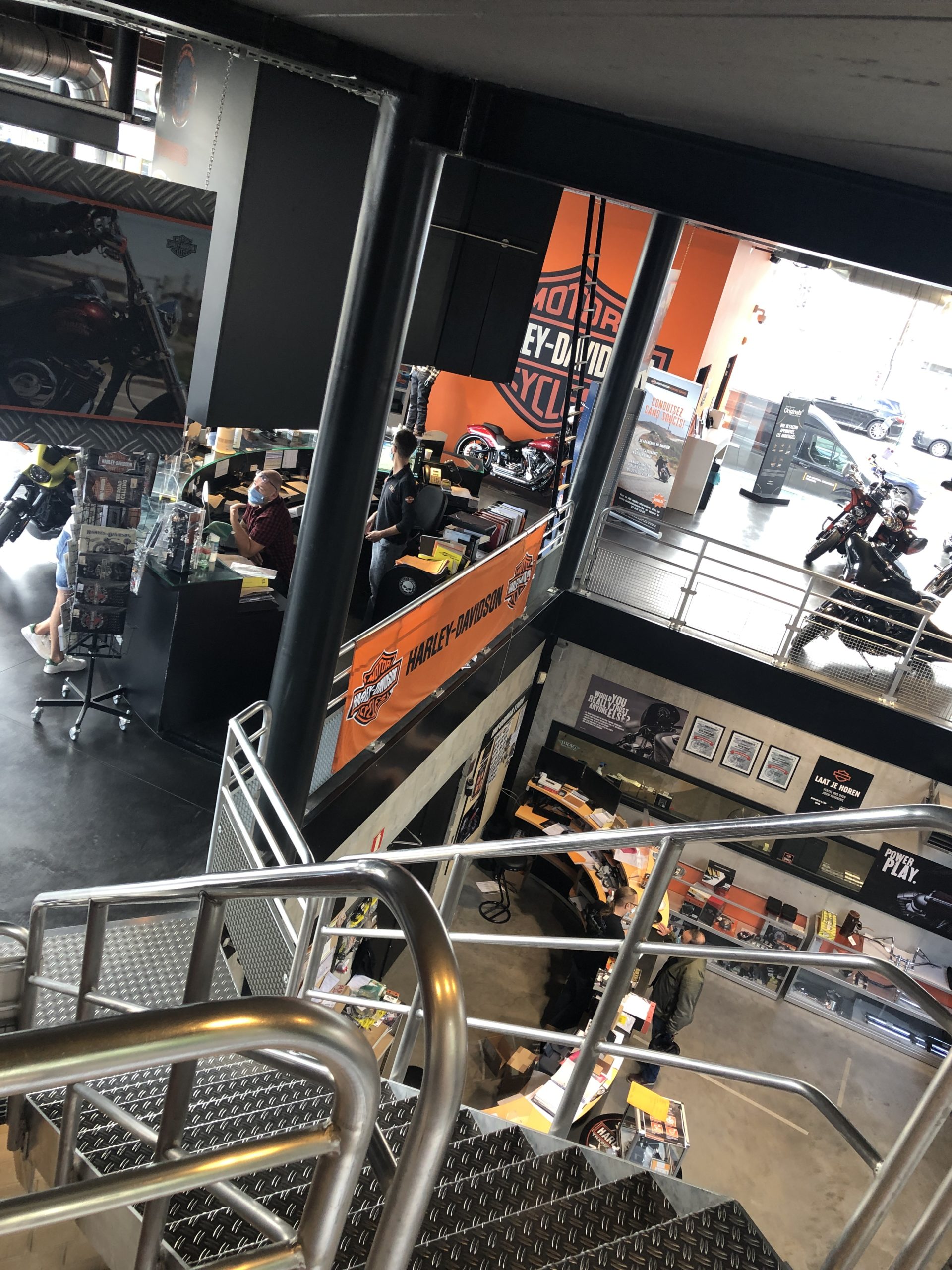
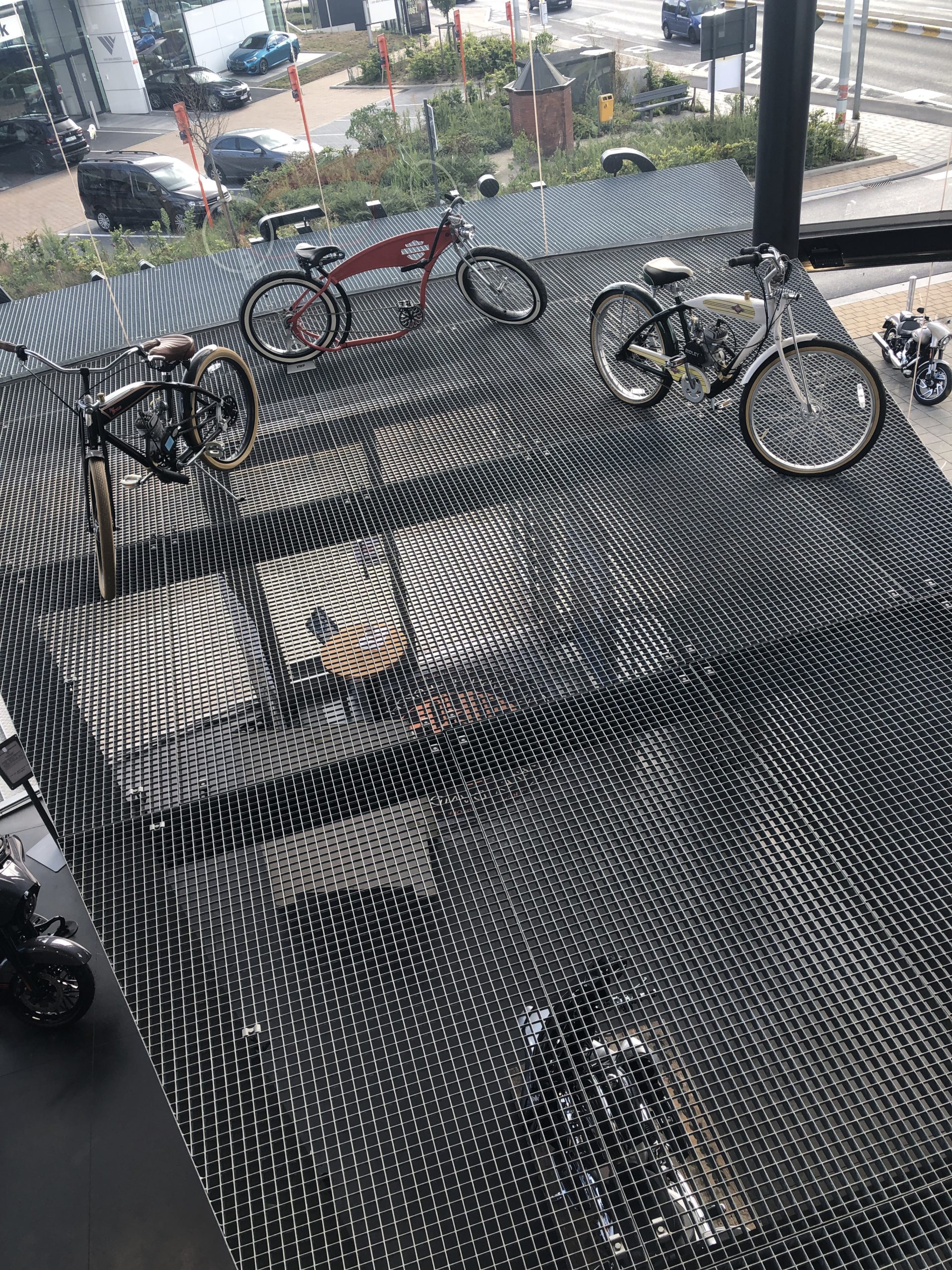
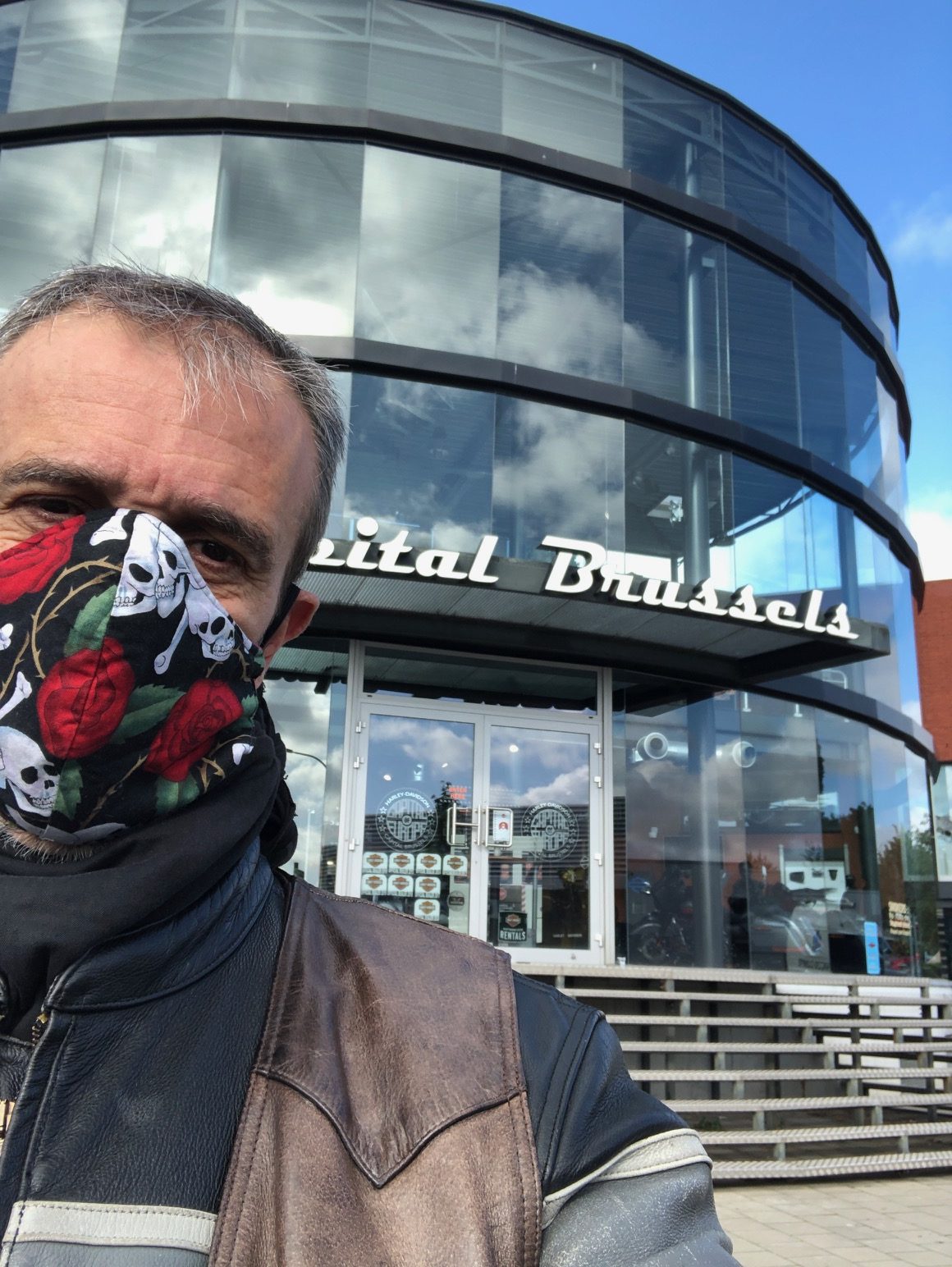
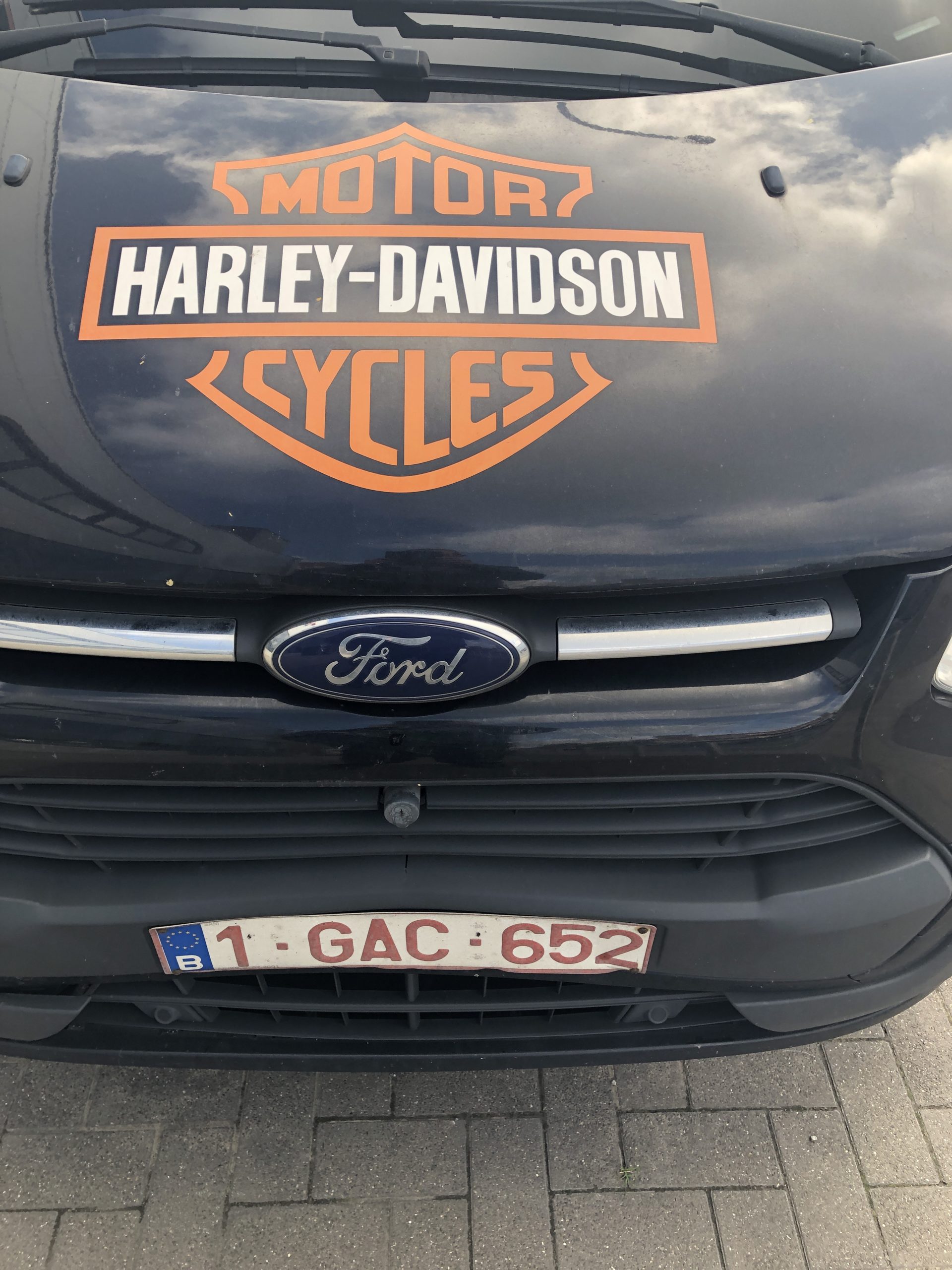

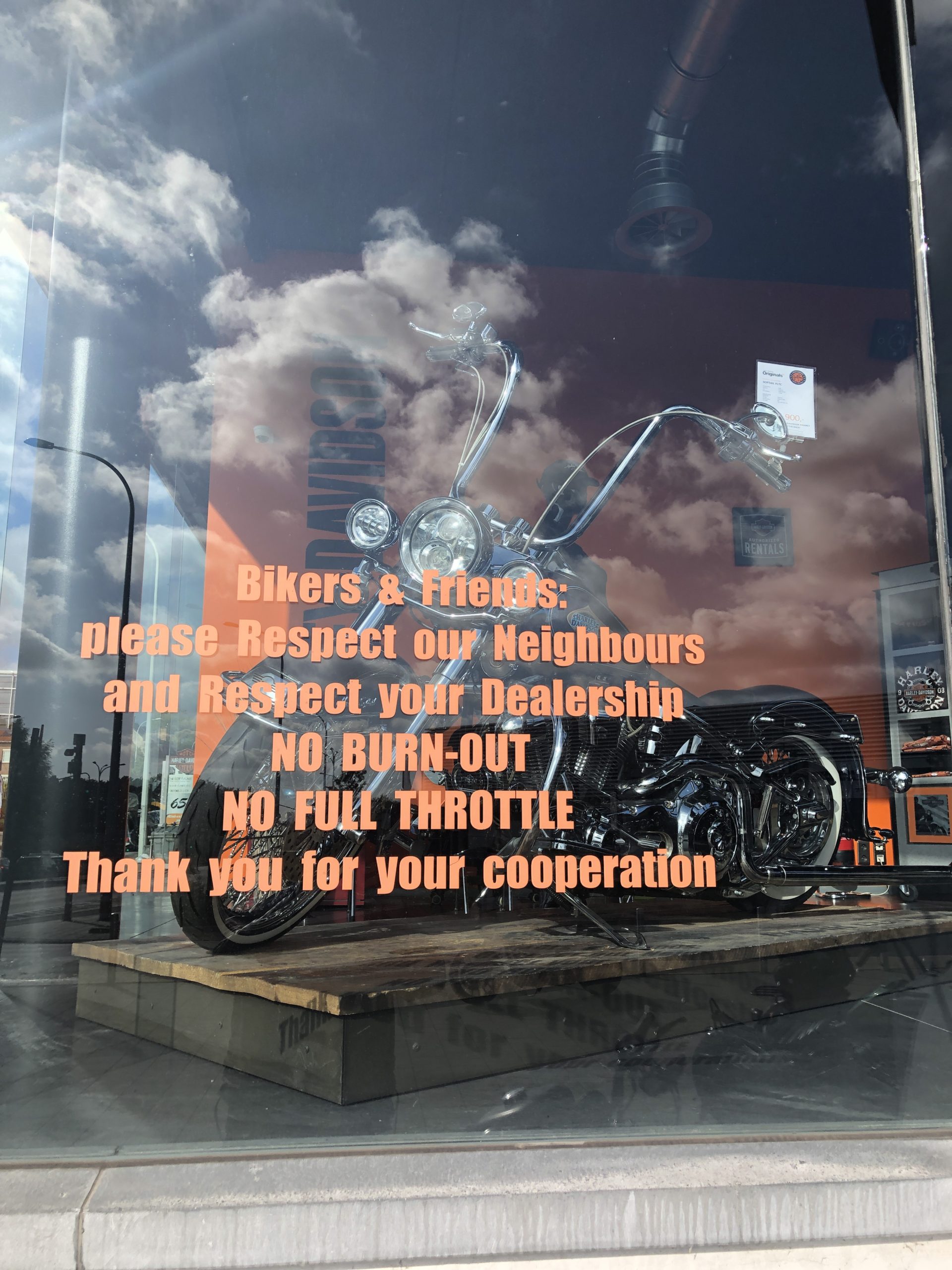
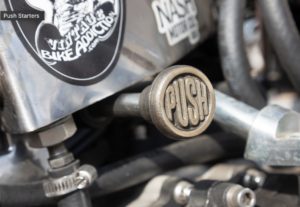
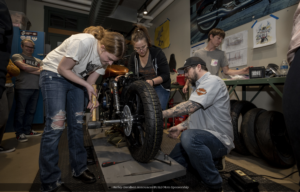

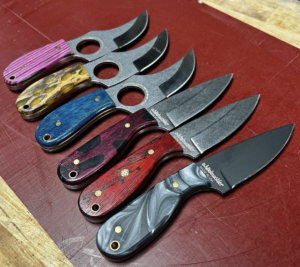
More Stories
THE NO DESTINATION LONG RIDE (2800 km / 1740 miles)
LONG DISTANCE RIDE: LE DÉFI 999 (THE 999 CHALLENGE)
RIDIN’ EL TEIDE!